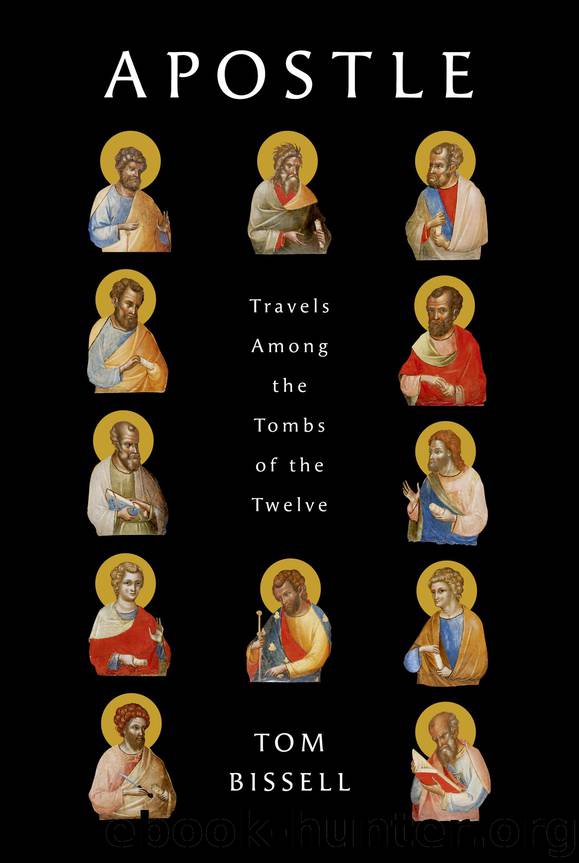Apostle by Tom Bissell

Author:Tom Bissell
Language: eng
Format: epub
Publisher: Knopf Doubleday Publishing Group
Published: 2016-02-29T16:00:00+00:00
This is the only time in the gospel tradition that the author turns to his audience and claims to be witness to the events recorded.
It would seem that this passage was intended to address a question being asked within the Johannine community; its mention of “the rumor” makes much less sense otherwise. If the community claimed as its lodestar someone with a special relationship to Jesus, and at least part of the community believed that this person would live until Jesus’s return, what would have happened when that lodestar died? Obviously, the community would have been forced to explain to itself what that meant. And here we have the community’s conspicuously underwhelming explanation: it was a big misunderstanding.
The Beloved Disciple, whatever his identity, and whatever his fate, was not intended to be the apostle John. Those who believe otherwise are implored to consult the work of three scholars who have done extensive work on Johannine Christianity: Raymond E. Brown, R. Alan Culpepper, and Richard Bauckham, all of whom were or are believing Christians and one of whom, Bauckham, is an extremely conservative (and intelligent) advocate of what has been called “elegant fundamentalism.” All reject a Beloved Disciple intended by the gospel’s author to be understood as the apostle John.
The real question about the Beloved Disciple is not whether he was John but whether the writer of the gospel expected his audience to know his identity. The way in which the gospel refers to the Beloved Disciple (“the disciple whom Jesus loved”) is a noticeably formulaic, even ritualistic, phrase and could easily have been inserted into existing traditions. More than that, the Beloved Disciple material exists in what several scholars categorize as “tension” between John’s gospel and the synoptic gospels, which contain not a single trace of John’s Beloved Disciple material.
To my mind, the most convincing possibility is that the Beloved Disciple is intended to stand in metaphorically for the Johannine community itself. The metaphors throughout the Fourth Gospel are heavily worked, starting with its opening lines: “In the beginning was the Word, and the Word was with God, and the Word was God.” Surely, a community inclined to view Jesus as an abstraction of this magnitude would have no trouble projecting itself, communally, into the gospel story. John 21, then, may represent a later stage in the community’s journey, in which the original, spiritual thrust of the Beloved Disciple metaphor was replaced by literal interpretation. As the community’s lot worsened, its scribes might have taken the original metaphor of a communal relationship to Jesus and reified it through explicit dramatization.
Download
This site does not store any files on its server. We only index and link to content provided by other sites. Please contact the content providers to delete copyright contents if any and email us, we'll remove relevant links or contents immediately.
| Buddhism | Christianity |
| Ethnic & Tribal | General |
| Hinduism | Islam |
| Judaism | New Age, Mythology & Occult |
| Religion, Politics & State |
Cecilia; Or, Memoirs of an Heiress — Volume 1 by Fanny Burney(31341)
Cecilia; Or, Memoirs of an Heiress — Volume 3 by Fanny Burney(30938)
Cecilia; Or, Memoirs of an Heiress — Volume 2 by Fanny Burney(30896)
The Secret History by Donna Tartt(16644)
Sapiens: A Brief History of Humankind by Yuval Noah Harari(13067)
Leonardo da Vinci by Walter Isaacson(11913)
The Radium Girls by Kate Moore(10914)
Sapiens by Yuval Noah Harari(4546)
The Wind in My Hair by Masih Alinejad(4427)
How Democracies Die by Steven Levitsky & Daniel Ziblatt(4407)
Homo Deus: A Brief History of Tomorrow by Yuval Noah Harari(4287)
Endurance: Shackleton's Incredible Voyage by Alfred Lansing(3852)
The Silk Roads by Peter Frankopan(3771)
Man's Search for Meaning by Viktor Frankl(3645)
Millionaire: The Philanderer, Gambler, and Duelist Who Invented Modern Finance by Janet Gleeson(3574)
The Rape of Nanking by Iris Chang(3522)
Hitler in Los Angeles by Steven J. Ross(3443)
The Motorcycle Diaries by Ernesto Che Guevara(3340)
Joan of Arc by Mary Gordon(3263)
